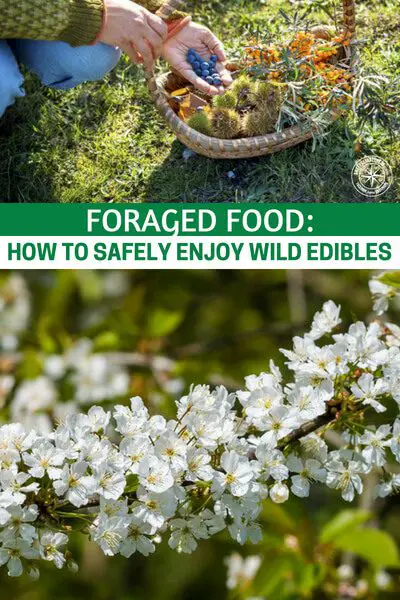SHTFPreparedness may collect a share of sales or other compensation from the links on this page.
When we think of survival food, there are some standard meals that often come to mind: MREs, wild berries and roots, and wild-caught fish. It’s not the kind of spread that would impress your mother-in-law, that’s for sure.

Well, I’m writing this to tell you that it doesn’t have to be that way! You can eat well with the food you’ve got on hand, even if it’s the kind of food you found under a rock in your backyard.
I think, in any survival situation, varied and interesting meals are a lot more important than you’d think. What would sap your desire to live more than having to eat dehydrated apple pie day-in and day-out? If that’s what I’d have to look forward to during the zombie apocalypse, I’m gonna take my chances with the zombies.
The following are some great recipes that are easy to put together with foraged foods, listed in order from easiest to most complicated. Yes, eventually dandelion jelly might feel like a luxury, but trust me – it’s a luxury that’s worth the effort.
Acorn Griddlecakes
Did you know that you can easily process acorns into flour? It takes a bit of work, but by using techniques that have been refined for centuries by First Nations people, you can have a great supply of nutritious, protein-rich flour to use for everything from bread to gravy. For a great primer on cold-leaching your acorns to make flour, check out this informative post.
Acorn griddlecakes are incredibly easy to make, and you can scale this recipe up if you’d like to. Just take 2 cups of acorn flour and add ½ tsp salt and ¾ cup of water. Mix it up into a batter and put it aside for an hour to solidify. Heat up a pan with a pat of butter or lard, then pour about a half cup of batter onto it once it’s hot. Brown the cakes on both sides like you would with pancakes.
Refried Hopniss
Hopniss is a plant that seems like it’s half-potato, half-legume. Fittingly, its nickname is “potato bean.” Both its beans and tubers are edible, though personally, I think the tuber is the best part. When young, the tubers are oval-shaped and light yellow in color, with thin skins that are easy to peel.
Dandelion Jelly
This is one of my favorite jellies to put on my dandelion bread.
Once your dandelions blossom in the late spring, harvest about 4 cups of the flowers. (You might have to ask your neighbors if you can steal their blossoms, too!).
Separate the petals from their green bases with some sharp scissors, then pour boiling hot water over the petals and steep them for a few hours. Strain the liquid through a fine mesh colander or coffee filter.
Boil the liquid with lemon juice and sugar to taste, then add a box of pectin. Let it boil for about two more minutes. It tends to become a murky yellow-green, which I prefer because it feels more au naturel. Distribute the mixture into sterilized jars, then seal and share with your loved ones.
Soleil Ho works for Knife Depot, and writes on a wide range of topics related to practical survival skills: using wild edibles, shopping for survival knives, foraging, field preparation of game, and more.
